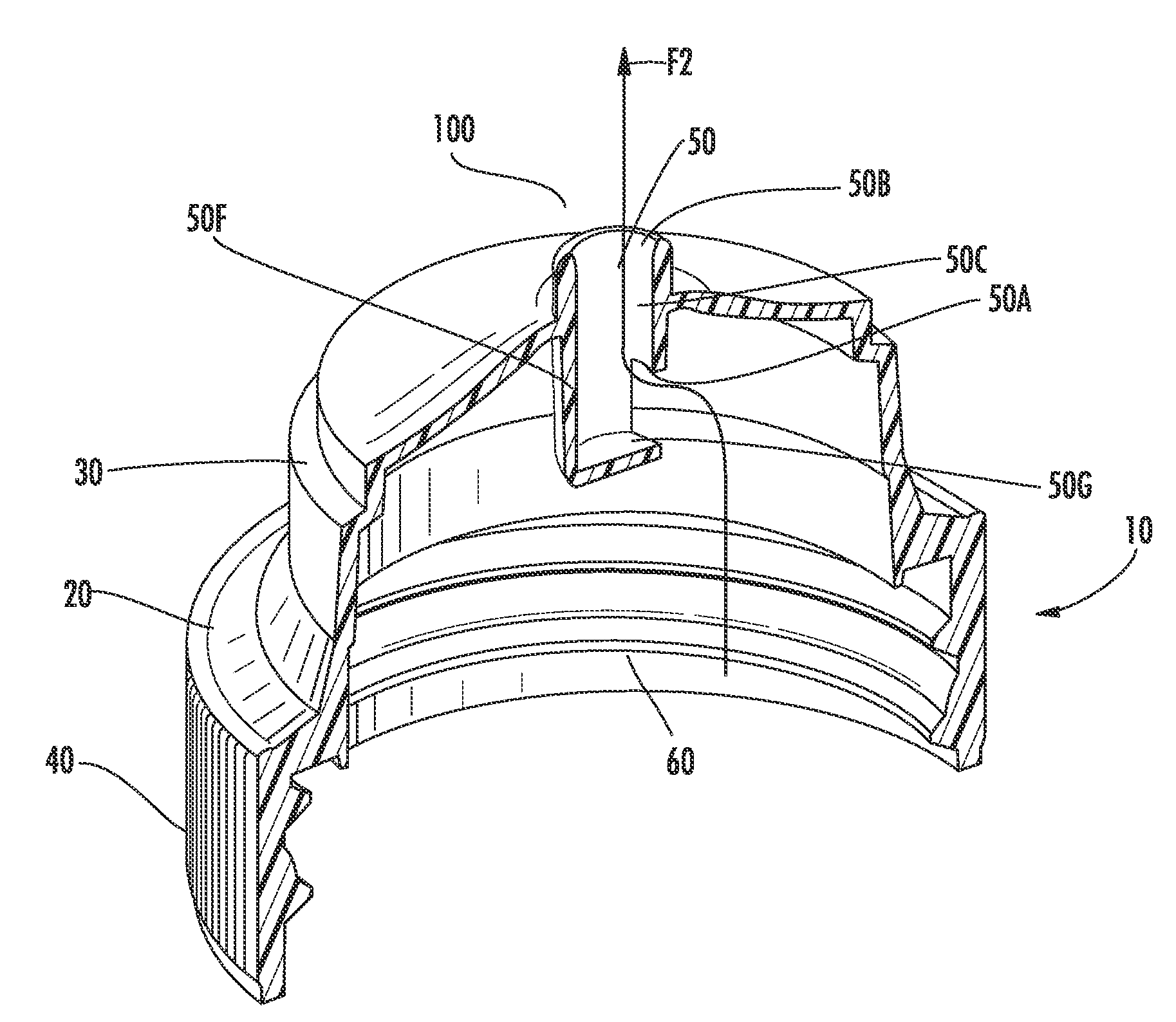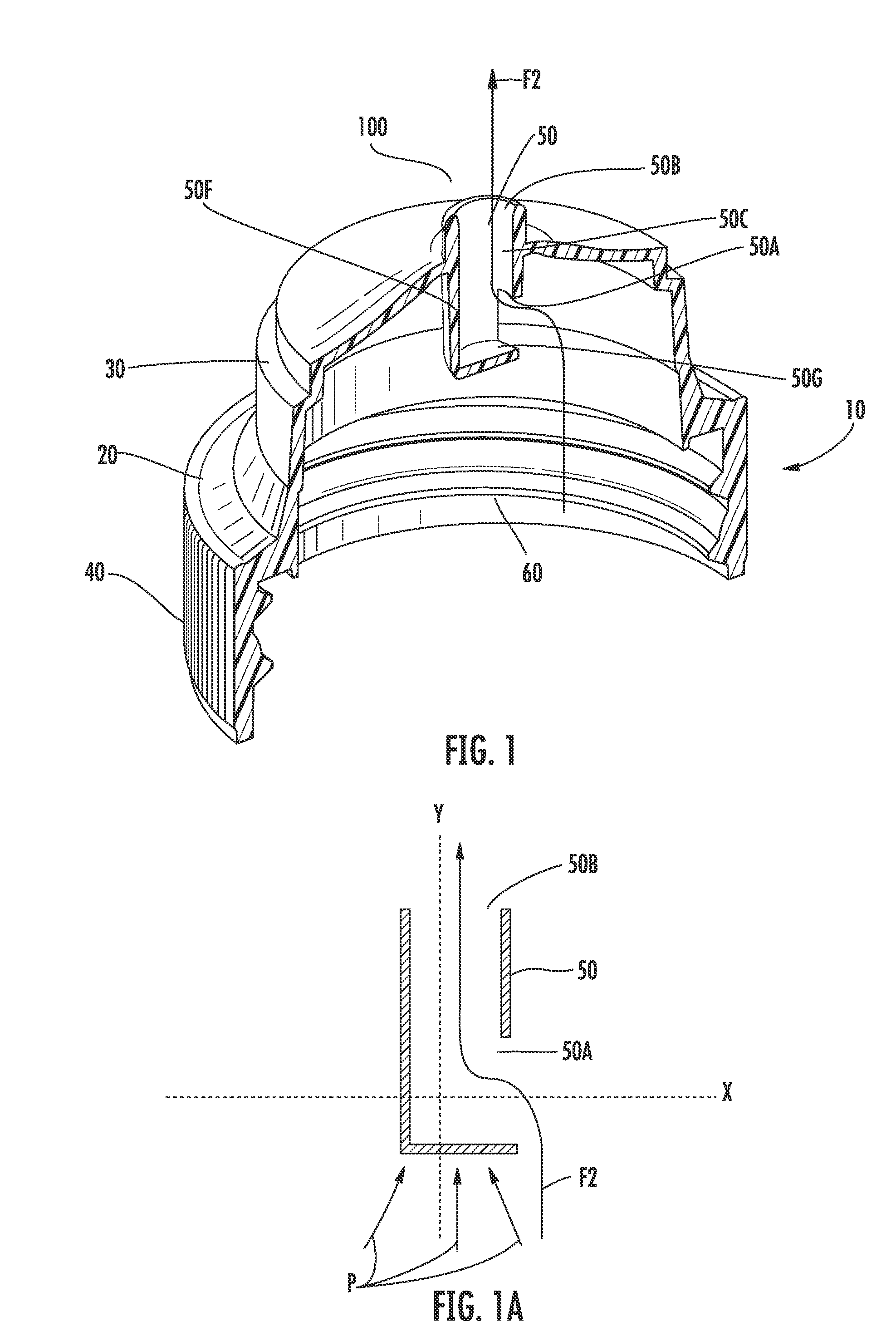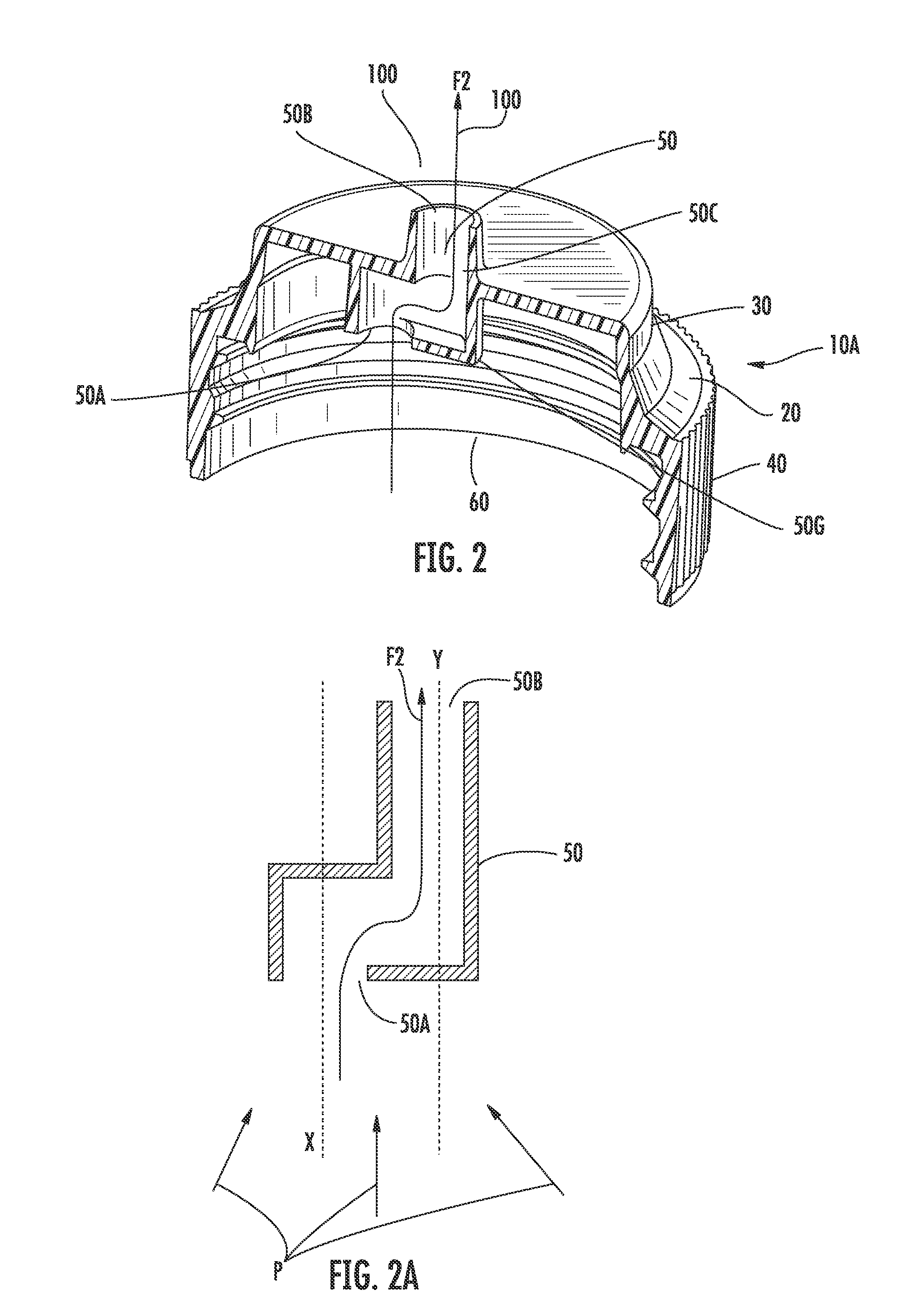Dispensing closure with obstructed, offset, non-linear flow profile
a technology of dispensing closures and obstructed openings, applied in the direction of closures using stoppers, caps, liquid handling, etc., can solve the problems of difficult manufacturing, more expensive than traditional one-piece dispensing closures, and a messy appearan
- Summary
- Abstract
- Description
- Claims
- Application Information
AI Technical Summary
Benefits of technology
Problems solved by technology
Method used
Image
Examples
first embodiment
[0036]In the first embodiment as illustrated in FIGS. 1 and 1A, the entrance orifice 50A is located in the side-wall of the flow conduit 10, wherein the entrance axis X is perpendicular to the exit axis Y. The bottom wall 50G of the conduit thus prevents the direct flow of product (see arrows P—FIG. 1A) into the flow conduit along the exit axis Y and acts as a baffle to counter product head pressure created by either storing the product in an inverted condition, or head pressure created when an upright container is quickly inverted to dispense product. Flow of the product is shown by arrow F2.
[0037]The baffling effect is also enhanced by the passage of the product from the container, through the small entrance orifice 50A and into the interior of the flow conduit 50. The velocity of the product will increase as it travels through the entrance orifice 50A. However, the velocity of the product then decreases as it travels into the larger interior volume of the flow conduit 50 before i...
third embodiment
[0041]Now referring to FIGS. 3-6, the dispensing closure is illustrated and generally indicated at 10B. As mentioned previously, the embodiment of the dispensing closure 10B has a closure lid 130 attached to the closure body 20 of the dispensing closure. A living hinge structure 140 is used to connect the closure lid 130 and the closure body 20 to control the movement of the closure lid 130.
[0042]The flow conduit 50 includes a suspended central disc 110, which forms a bottom wall of the conduit. The central disc 110 is suspended within the flow conduit 50 by four downwardly depending arms (120 A-D), each distal end of the depending arms (120A-D) being attached to the central disc 110 and each proximal end of the depending arms (120A-D) being attached to the interior wall 50C of the flow conduit 50.
[0043]In a preferred embodiment, the four depending arms (120A-D) are equally spaced around an outer edge of the central disc 110. Alternatively, more than four arms or less than four depe...
PUM
 Login to View More
Login to View More Abstract
Description
Claims
Application Information
 Login to View More
Login to View More - R&D
- Intellectual Property
- Life Sciences
- Materials
- Tech Scout
- Unparalleled Data Quality
- Higher Quality Content
- 60% Fewer Hallucinations
Browse by: Latest US Patents, China's latest patents, Technical Efficacy Thesaurus, Application Domain, Technology Topic, Popular Technical Reports.
© 2025 PatSnap. All rights reserved.Legal|Privacy policy|Modern Slavery Act Transparency Statement|Sitemap|About US| Contact US: help@patsnap.com



